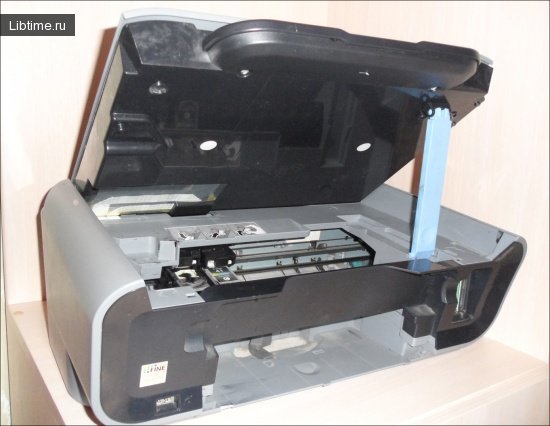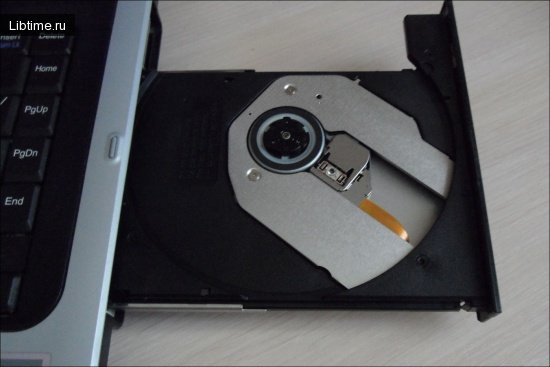Information storage technologies
Storage devices, or computer memory are divided into three groups:
- RAM, the RAM (RAM);
- Permanent memory, a permanent storage device (ROM);
- External memory, external storage device (ESD) (hard disk drives, floppy disks, compact disks, magnetic tape drives, magneto-optical disks, etc.).

The permanent storage device stores the service data and programs needed to start the computer immediately after the power is turned on.
RAM
RAM or RAM (Random AccessMemory ) is designed to store information that the processor is working with at a given time.
RAM is a microchips that are installed on a small board, which is inserted into a special connector on the motherboard of the computer. Data in the RAM is stored as long as the computer is connected to the power, and destroyed immediately after it is disconnected. 
RAM design
The internal structure of RAM can be visualized as a rectangular matrix of cells, each of which can store 1 bit of information. In other words, in each cell can be written 1 or 0. Data exchange between the processor and RAM is carried out on a special bus (information highway). The operation of such an exchange is called a bus cycle.
The number of bits of data that transmits or receives the processor for one bus cycle, called the width of the bus. RAM produced in the form of expansion cards, or modules that are inserted into their designated sockets on the motherboard.
There are modules designs
- SIMM (Single in-Line Memory Modules - boards with a single-row arrangement of memory chips - obsolete, almost not used),
- DIMM (Dual In-Line Memory Modules - originally boards with one and two rows of memory chips),
- RIMM - (Rambus In-line Memory Module).
Types of RAM chips
RAM is used in a wide variety of personal computer devices, from video cards to laser printers. RAM chips in this case may belong to different modifications, but all of them belong to the type of dynamic RAM (DRAM).
Microcircuits of buffer or cache memory, which are installed in hard disks, CD-ROM drives, etc., cache of the first and second levels, installed on processors - this is a faster (and more expensive) static memory (SRAM). The capacity of this memory is relatively small - hundreds of kilobytes against tens and hundreds of megabytes in DRAM, but the speed of its operation is ten times higher.
Static memory cell (SRAM - Static RAM) is an electronic device, which is called a trigger and can be in one of two stable states: logical zero and logical one. The state of the trigger is maintained until the power supply is removed or a signal is input to the device to change it to a different state.
The state of a DRAM (Dynamic RAM) cell is maintained by the charge of a capacitor. As long as the charge is maintained, the cell contains a one; when there is no charge, the cell contains a logic zero.
Since the charge on the capacitor is maintained for a short time (approximately a few milliseconds), the device is periodically recharged by reading and writing the contents of the cells. The cells of dynamic memory form a matrix called a bank.
RAM is available in the form of chips that are assembled into special memory modules. A few years ago, 72-pin SIMM-type modules were common, which had to be installed in a computer only in pairs (each module represented half of a standard memory "bank"). В
1998 168-pin DIMM modules appeared on the market, which could be installed one by one. Each DIMM module can contain from 1 to 512 Mbytes of RAM, but in practice today use modules of two types - 128 and 256 Mbytes.
The amount of RAM, which is 128 MB - is the minimum for modern computers that run under Windows 98, 2000, Me, XP, and 256 MB and above - the optimal value. Most motherboards today have 3 slots for connecting RAM modules.
Modules in these slots can be inserted in different sizes - for example, 2 of 64 MB and one of 128 MB. But it is desirable that the modules have the same access speed (for example, 7 ns) and were produced by the same manufacturer.
Types of RAM
SDRAM. Synchronous DRAM - synchronized with the system timer, which is controlled by the central processor. SDRAM has a data access time of 6 to 9 ns and a bandwidth of 256 to 1000 Mbytes/s. An important parameter of SDRAM modules is the maximum operating frequency of the bus.
There are three main modifications of RAM: 9-ns modules, which correspond to the specification PC66, can operate at a system bus frequency up to 83 MHz, while the base frequency is 66 MHz. Memory of this type is now obsolete.
At the end of 2000, modules with the brand PC100 (access time of 8 ns), which operate at system bus frequency up to 110-120 MHz (with the base frequency of 100 MHz), left the arena. Modules of the third type PC133 (7 ns) - support operating bus frequency up to 150 MHz (with the basic - 133 MHz).
DDR SDRAM. Double Data Rate DRAM - memory with double data rate - the next generation of SDRAM. DDR SDRAM is based on the same principles as SDRAM, but includes some improvements that allow to further increase performance.
Used mechanism of data transfer on both edges of the synchronized signal gives twice as fast data transfer relative to SDRAM. When compared to conventional SDRAM, thanks to the features of its architecture DDR SDRAM works twice as fast - its bandwidth reaches 3.2 Gbytes, and access time is 5-6 ns.
The DDR SDRAM bus frequency is ~ 600-700 MHz. Therefore, even at standard frequencies of 100 and 133 MHz its performance is twice as high. In the marking of memory models is not the frequency of the system bus, as in SDRAM, but the bandwidth (Mbytes / s).
Memory labeled PC 1600, 2100, 2700 and 3200 operates at the working frequencies of the bus for these modules - 100, 133, 166 and 200MHz respectively.
DRDRAM. Direct Rambus DRAM (RDRAM) memory is developed by Rambus Inc. It has a multifunctional protocol of data exchange between chips, which allows data transfer on a simplified bus operating at high frequency. RDRAM is a system-level integrated technology.
Memory performance looks impressive - DRDRAM supports a bus operating frequency of 800 MHz for PC800 modules, up to 1066 MHz for PC4200 modules, a memory access time of 4 ns and data transfer rates of up to 6 Gbytes/s. (Both the 840 and 820 are Intel's very first chipsets).
DRDRAM modules cost several times more than SDRAM and DDR SDRAM. But motherboards for Intel Pentium 4 processors (i850, i850E, etc.) are designed to work with it.
Cache memory
The speed of access to RAM is less than the speed of the processor. Therefore, to improve computer performance, cache memory (cash memory) was created to act as a buffer between the processor and RAM.
There are two levels of CPU cache: first level cache memory (called L1) and second level cache memory (called L2). The second level cache memory in early models of processors (Pentium, Pentium II, Pentium III (Katmai)) was sometimes located on the motherboard and was a separate chip.
The processor first accesses the L1 cache, then the L2 cache, and only after that the RAM. In modern processors (Pentium III, Celeron (Coppermine, Tualatin), Pentium IV, Athlon (Thunderbird), Athlon XP (Palomino, Thoroughbred), Duron) the second level cache memory is built into the processor.
Due to this, the speed of microprocessor access to the second-level cache memory is much higher than to the RAM.
Virtual memory
Sometimes the amount of RAM is not enough for a program that is launched for execution. In MS DOS, such programs will simply not run. In some operating systems, such as Windows, this problem was solved by creating so-called virtual memory.
Virtual memory, or swap file, is an area on the hard disk, which is used as an additional RAM storage device. The access time to such memory is longer than to the usual RAM, but thanks to its presence, it is possible to run programs that otherwise would not work at all.
The C: drive is used by default to organize virtual memory. The maximum size of the swap file is equal to the amount of free space on it. Therefore, you should always leave 200-500 Mbytes free.
Permanent memory
Data that is written to a permanent memory device, or ROM (Read Only Memory), cannot be erased or overwritten under normal circumstances. They are retained for any length of time if the power supply is disconnected.
Permanent memory design
ROM realized in the form of chips that are installed on the motherboard of the computer. Recording information in ROM is carried out once - at the manufacturer. According to the method of recording data ROM chips are divided into two categories:
- Mask ROMs (which are written once at the stage of production of the chip);
- Programmable ROMs:
- One-time programmable ROMs (Programmable ROM)
- reprogrammable ROMs (EPROM - Erasable PROM) - which are erased electrically (EEPROM - Electrically Erasable PROM).
The contents of the latter can be changed by applying a special electrical charge to the chip pins.
FLASH-memory
The inventor of FLASH-memory is Intel Corporation (1988), and the name comes from the method of erasing - the whole chip at once. Now the chips do not have this disadvantage and erasure is byte-by-byte or page-by-page.
Due to further development of EEPROM, FLASH memory (flash memory) appeared, but not in the direction of technical improvement, but in the direction of cost reduction. 
Modern samples have a capacity of 32- 1024 MB, can be produced under different supply voltages and conduct more than 1 million write/read cycles. In addition, manufacturers guarantee the preservation of information for at least 10 years. FLASH memory combines the advantages of ROM and RAM.
Like RAM, FLASH-memory allows you to overwrite the data stored in it, but unlike RAM, saves them in case of power failure. FLASH-memory modules are made on the basis of EEPROM technology, read and write time has the same value as similar parameters of dynamic RAM.
Another advantage of FLASH memory is that it consumes power only at the moment of read/write.
Popular cards in 2000:
- Smart Media Card (SMS) - announced in 1998, size 45x37mm2. Compatible with cameras and devices made by Epson, Agfa, Minolta, Olympus, Ricoh, Sanyo, Fuji Fhoto film, Toshiba.
- MultiMedia Card (MMC) - the smallest in size (24x32 mm2).
- Secure Digital card (SDC) is a further development of the MMC card. The technology is used in the Palm, Toshiba Pocket PC family.
- Compact Flash (CF) is used for digital cameras, MP3 players, PDAs, etc.
- Memory Stick (MS) was first used only for digital cameras, MP3 players, Sony PDAs. Today the range of manufacturers is expanding.


